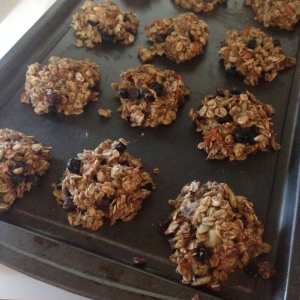Monkey See, [Monkey Hear]- Monkey Do
December 10, 2019Thanksgiving Fruit Turkey
December 10, 2019Indulge In Nutrition has been doing our part in helping spread awareness of childhood obesity during the month of September. Our September newsletter featured background information on Childhood Obesity Awareness Month, fit tips, and recipes. The month’s blog posts have also brought you back to school tips to keep healthy and active, along with a yummy recipe for Carrot & Oat Cookies!
This week, we wanted to educate you on the added sugars you may not even know you (and your little ones!) might be consuming.
“Added sugar,” as you could probably guess, is just what it sounds like – any sugar added during processing or preparation that is not naturally occurring.
The CDC reports that in 2008, boys consumed an average of 16.3% of their calories from added sugars, while girls consumed an average of 15.5% of their calories from added sugars. As kids age, that percentage goes up. These number have declined since 2008, but still remain higher than the recommended intakes by health organizations.
Some of the concerns of consuming so many added sugars is that our kids are replacing more nutrient dense foods with those high-energy added sugars (also called “non-nutritive calories.”) There are also studies that show there is a relationship between increased of consumption of added sugars and obesity. Not to say that sugars cause obesity, but they may contribute to obesity and all of its negative health effects.
You know the common places for added sugars- junk food, desserts, sodas, sweetened drinks, and candy. But what about all of that HIDDEN added sugar? Added sugars (and their non-nutritive calories) are hiding in all kinds of food we don’t even know about. Products like: dried fruits and raisins, ketchup, other sauces, and dressings, “fat-free” products, fruit and vegetable juices, and so many more.
Reading the label of your foods can provide so much insight! You don’t have to look very far to find added sugars. Sometimes an ingredient list might not label “sugar” on the list — key words to look out for are “maltodextrin”, “corn syrup,” “dextrose,” “brown rice syrup,” “fructose,” “sucrose,” and “juice concentrates.”
What else can you do to limit sugar intake? Making sure that the recommended amounts of fresh fruits and vegetables, lean meats, dairy products, whole grains, and healthy fats are available for your quickly growing little ones will help a ton! And while we DO want to limit added sugar consumption, remember that enjoying treats (yes, even sugary ones) is ok when enjoyed in moderation. 🙂
Check back next week for another recipe to help combat childhood obesity!


